Bullet removal from the infratemporal fossa
- PMID: 28299274
- PMCID: PMC5343644
- DOI: 10.4103/2231-0746.200340
Bullet removal from the infratemporal fossa
Abstract
War injuries are the cornerstone of maxillofacial surgery, and it led to the initiation and development of this specialty, and each case represents a challenge to the surgeon who deals with it. In this article, we present a 30-year-old male patient who was referred to our emergency department complaining of gunshot wound, severe pain, and limitation in mouth opening. Preoperative imaging showed a bullet with a very long path lodged in the infratemporal fossa. Three different approaches with the aid of C-arm imaging system were used for the removal of this bullet; the last approach was the successful one.
Keywords: C-arm scanning; gunshot wounds; infratemporal fossa approach; missile injuries.
Conflict of interest statement
There are no conflicts of interest.
Figures


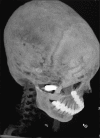
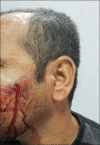



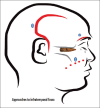

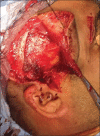


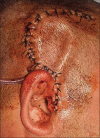
References
-
- Rowley DI. The management of war wounds involving bone. J Bone Joint Surg Br. 1996;78:706–9. - PubMed
-
- Gugala Z, Lindsey RW. Classification of gunshot injuries in civilians. Clin Orthop Relat Res. 2003;408:65–81. - PubMed
-
- Park SS, Yang HJ, Lee UL, Kwon MS, Kim MJ, Lee JH, et al. The clinical application of the dental mini C-arm for the removal of broken instruments in soft and hard tissue in the oral and maxillofacial area. J Craniomaxillofac Surg. 2012;40:572–8. - PubMed
-
- Siessegger M, Mischkowski RA, Schneider BT, Krug B, Klesper B, Zöller JE. Image guided surgical navigation for removal of foreign bodies in the head and neck. J Craniomaxillofac Surg. 2001;29:321–5. - PubMed
-
- Cunningham LL, Haug RH, Ford J. Firearm injuries to the maxillofacial region: An overview of current thoughts regarding demographics, pathophysiology, and management. J Oral Maxillofac Surg. 2003;61:932–42. - PubMed
Publication types
LinkOut - more resources
Full Text Sources
Other Literature Sources

